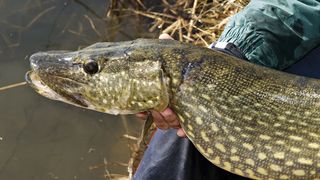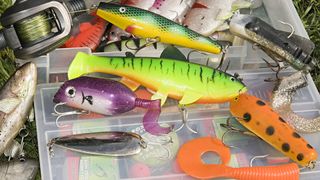How to catch pike in spring: top tips for catching out of season
Want to know how to catch pike in spring? Tackle the species during warmer months with these tips

Welcome to Advnture, the new home of AnglersMail.co.uk
Learning how to catch pike in spring takes an unusual approach. Pike fishing by dedicated specialist anglers is often only from October to March, this being the traditional pike season.
This gives the pike a break for spawning but also reduces the stress to fish, which can soon become gassed up after a hard fight in warm water where oxygen levels are reduced.
But pike are more active in the warmer months and when they decide to feed they often go into a frenzy and snaffle down baits very quickly.
For this reason we do not recommend the use of deadbaits until the winter months. This will inevitably result in deeply hooked and often damaged fish.
Pike are perceived to be tough, hardy predators but they do not cope very well with being hooked deeply or kept out of the water for too long.
- How to catch pike at night
- How to unhook pike: unhooking fish safely
- How to find big pike
If you want to learn how to catch pike in spring, use lures, but ensure that you are using adequate tackle – they will fight hard.
Advnture Newsletter
All the latest inspiration, tips and guides to help you plan your next Advnture!
Mono should be at least 12lb and braid 40lb breaking strains and always use a quality wire trace of min. 26lb breaking strain and at least 18 inches long.
Get the fish in quickly, unhook with forceps and release the pike as soon as possible.
Where appropriate, unhook the fish in the water without re-locating to the unhooking mat.
Following these pike fishing tips, and a few simple rules will ensure the pike will be returned unharmed to be caught another day.

How to catch pike in spring: why are lures the best way to catch pike?
When it comes to learning how to catch pike in spring, lure fishing is the only accepted method.
This is a much more pike-friendly method during the warmer months when fish are more actively feeding in warmer water where oxygen levels are reduced.
Lure fishing for pike using spinners, plugs and spoons is a great, exciting way of catching pike.
In summer they will hit lures very hard and give a fantastic fight right to the net.
When choosing lures you need to determine the pattern, type and size to suit the water you’re fishing.
You’ll need to consider the presence of snags, weed beds and rocks to ensure you avoid snagging up.

How to catch pike in spring: what's the best way to cast?
When casting always cover an area in a systematic manner so you don’t miss those idle fish laying in wait. In deeper water you’ll need to cover all the depths too if you want to learn how to catch pike in spring.
Cover all features whether above or below the water line, reed beds, lily pads, drop-offs, ledges, sunken trees and over-hanging trees and hedge lines.
Always cover the shallow areas; it’s surprising how many fish will sit in water barely deep enough to cover their backs.

How to catch pike in spring: what's the best lure to use?
The market is flooded with lures of all colours and pattern designs, some no doubt designed to catch the angler and not necessarily the fish.
I prefer to use natural colours and patterns to mimic the pike’s usual diet of roach, bream, perch and their favourite food, pike.
That said, if you're not successful after covering an area, it often pays to use different colours as a change-bait.
It’s surprising how often a naturally coloured lure will be ignored and a lure, which doesn’t seem to resemble a fish at all, will be taken.
Perhaps these get the attention of the inquisitive fish that can’t resist the action of the lure regardless of what it looks like.
Change lures to find a pattern they like on the day!
Jointed shallow diving plugs are most commonly used locally with waters down to max 10ft.
The plug will float when at rest and dive when wound in, covering depths to around 6ft.
These are ideal for covering a large area above the weed line. Pike will happily come up from deeper water to hit lures on or near the surface.
Spinners are also commonly used, available in weights and sizes to suit all waters but make sure you use a quality spinner or you’ll find the hooks are not up to the job.
Remember, even when targeting perch on small spinners, you’re likely to hook a pike in the process so the choice of lure and quality of hooks has to reflect this.
Large spoons are surprisingly versatile and are very effective in all water depths and types.
Most Popular

